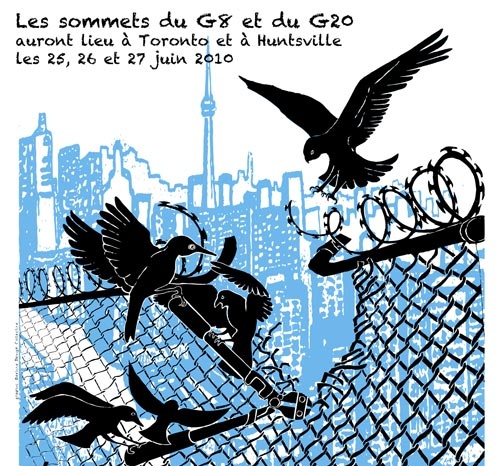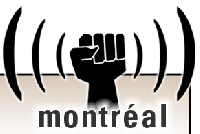 |
 |
 |
 |
 |
 |
|
 |
 |
 |
 |
 |
 |
 |
Régions du Québec |  |
 |
 |
|
 |
 |
|
 |
 |
|
 |
 |
 |
 |
 |
 |
Temas |  |
 |
 |
|
 |
 |
|
 |
|
 |
 |
 |
Slideshow on Poverty and Homelessness in Edmonton, Alberta, Canada
A digital story on homelessness and poverty in Edmonton, Alberta: the capital city of Canada's wealthiest province. It is an attempt to make sense of over a decade of inner city work — to combine photography with sound, narration, and personal reflection. www.clubwebcanada.ca/pieterdevos/
In the spring of 1996, I ventured into Edmonton’s inner city. I was nearing twenty-six at the time and my world was in chaos. Everything in my life had changed. Years earlier, I remember hearing a schizophrenic man describe the onset of his illness as “the day the earth shifted a quarter of a turn and stayed that way.�? Everything was out of kilter but still recognisable. The change in my life appeared in a similar way, fed by a growing awareness of the social inequities that exist in an otherwise affluent society.
I had just emerged from the protected world of university, disoriented and ill-prepared for life’s uncertainties. In the course of this confusion, I decided to channel my feelings into a constructive outlet, namely a photographic documentary of homelessness in Edmonton’s inner city.
A visual examination of our messy backyard, turned into a decade-long exploration of a world that exists at the margins of mainstream society. In the course of this journey, I witnessed first hand the structural inequalities present in Edmonton. I have worked with troubled street youth, counselled young prostitutes, and produced Our Voice Magazine -- a street paper that not only provides an income opportunity for people coping with poverty but also gives them a chance to express their concerns to a society from which they often feel excluded.
The inner city is a harsh environment, full of paradoxes and cold realities. It is a place that is shaped by the powerful interplay of economic and social marginalisation. It is Edmonton’s equivalent of the ghetto -- an area where geography and economics are combined to define, to isolate, and to contain a particular population group held to be inferior by the dominant powers in society. The October 2006 homeless count in Edmonton identified 2366 individuals as being homeless. Forty-two percent were Aboriginal and 75 percent of the Aboriginal individuals were observed to be absolutely homeless—that is, living on the street. Aboriginals are over-represented in the homeless population compared to the general population. They make up 42 percent of the street population but only represent about 4.6 percent of the total population of the city.
At times the juxtaposition of wealth and poverty in Edmonton's inner city is sadly comical. One glaring example is the Winspear Centre for Music, which is built on the site formerly occupied by the Boyle Street Community Co-operative, an agency that provides for the homeless. In the pursuit of urban renewal, those with the least resources have been pushed from the downtown area to the poorest regions of Edmonton -- further evidence that they are unwelcome in the capital city. Economic and political marginalisation has been followed by geographical marginalisation.
Other examples of the symbolic and material disenfranchisement of the poor are numerous. Terms such as “skid row�? and “ghetto�? are constant reminders that our notions of the inner city are influenced by profoundly negative emotions. The inner city is part of our urban mythology. It’s a kind of geographical boogieman. To the casual observer or the uninformed, it is hostile territory — a place where our fears of failure are personified in the cast-offs of society.
In a sense, the inner city is a metaphor. It’s a city within a city, but it’s also part of our collective consciousness. For some, it represents a stern warning against sloth and other perceived failures of character; for others, it’s the ultimate expression of human avarice, with small subsets of society hoarding the majority of the resources.
For me, it is a place that has transformed me. It is a place for which I have strong feelings grounded in relationships and memories. At the same time, it is a place that has remained elusive despite my best efforts to comprehend its dynamics and photograph its realities.
see www.clubwebcanada.ca/pieterdevos/
 |
 |
 |
 |
G20 Especial |  |
 |
 |
|
 |
 |
|
 |
Ofrecemos varios informes independientes y testimonios ...

Lista de acciones durante el 'contracumbre' a Toronto! Algunos medios independientes en Toronto G20 Centro de medios alternativos http://2010.mediacoop.ca Media Co-op Toronto http://toronto.mediacoop.ca Toronto Community Mobilization www.attacktheroots.net (en Inglés) |
 |
 |
 |
 |
 |
 |
 |
CMAQ: Vie associative |  |
 |
 |
|
 |
 |
|
 |
 Collectif à Québec: n'existe plus. Impliquez-vous ! |
 |
 |
 |
 |
 |
 |
 |
 |
|
 |
 |
 |
Ceci est un média alternatif de publication ouverte. Le collectif CMAQ, qui gère la validation des contributions sur le Indymedia-Québec, n'endosse aucunement les propos et ne juge pas de la véracité des informations. Ce sont les commentaires des Internautes, comme vous, qui servent à évaluer la qualité de l'information. Nous avons néanmoins une
Politique éditoriale
, qui essentiellement demande que les contributions portent sur une question d'émancipation et ne proviennent pas de médias commerciaux.
This is an alternative media using open publishing. The CMAQ collective, who validates the posts submitted on the Indymedia-Quebec, does not endorse in any way the opinions and statements and does not judge if the information is correct or true. The quality of the information is evaluated by the comments from Internet surfers, like yourself. We nonetheless have an
Editorial Policy
, which essentially requires that posts be related to questions of emancipation and does not come from a commercial media.


